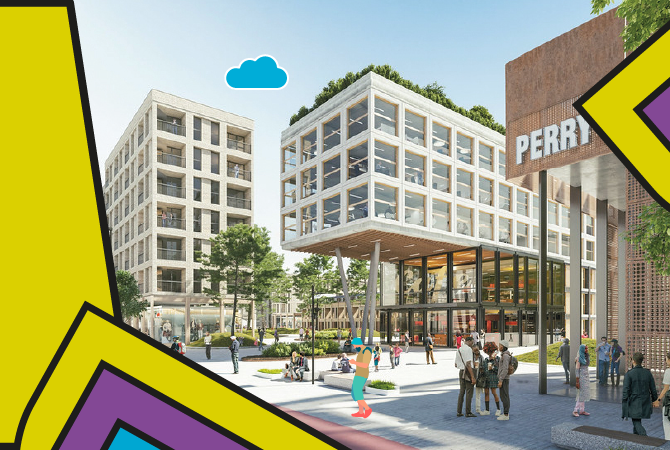A green growth city
The climate emergency

Launch an era of green growth through high-quality sports facilities, thousands of new sustainable homes and green transport links to become a carbon neutral city by 2030.
In June 2019 we declared a climate emergency and embarked on a strategy to adapt our built environment for a zero-carbon future for Birmingham – a future in which we work with nature rather than against it.
Earlier in 2021 we published Our Future City Plan, which provides a template for major change in our city, using the climate emergency as the impetus.
More recently we published the draft Perry Barr 2040 Masterplan, which seeks to ensure a positive legacy from the Commonwealth Games.
The Masterplan will support improvements for residents, including 5,000 new homes, a new urban centre, and a greener, healthier environment that will create long term benefits for people who live, visit and work there.
We cannot tackle the climate emergency without fundamental changes to the way people and goods move around our city. The Commonwealth Games is already being used as a catalyst to provide sustainable and reliable transport choices, for example through enhanced public transport, walking and cycling connections.
The Alexander Stadium, currently undergoing an extensive redevelopment, is a principal venue for hosting the Games. Post-Games, the Stadium will be a lasting legacy for Perry Barr and wider Birmingham, through an improved facility for users and visitors. A new operating strategy for the Stadium will help to enable a diverse, accessible and inclusive health and wellbeing programme of activity, whilst operating a sustainable facility by increasing occupation and use.
The scale of investment and change being delivered in Perry Barr also presents the opportunity to innovate, experiment and apply lessons learned elsewhere across the city, for example, through implementation of strategies for sustainable spaces and buildings, including sustainable water management and urban drainage, green walls and roofs and opportunities for low carbon heat and power.
